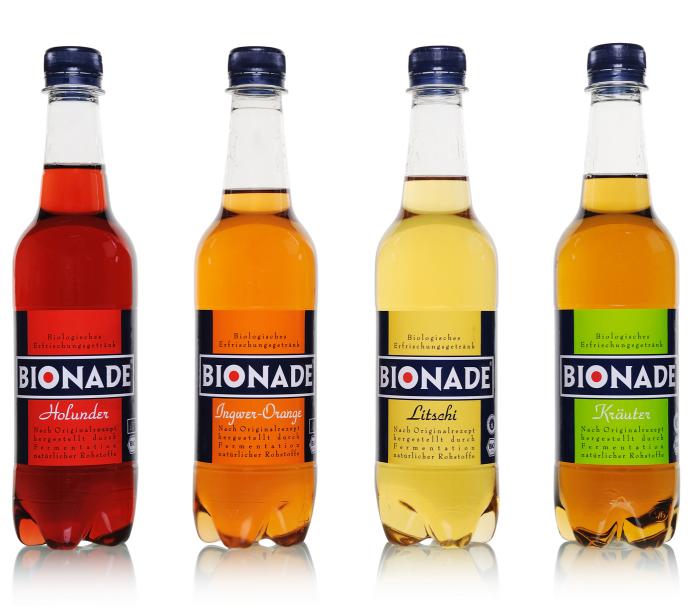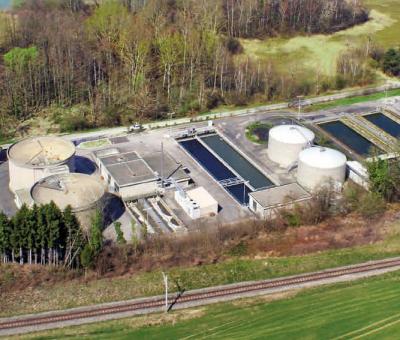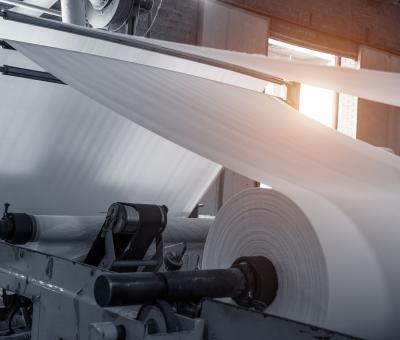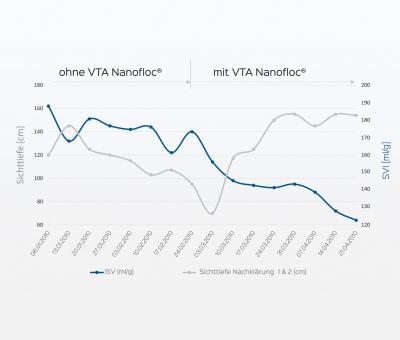Bionade GmbH: Thanks to VTA Nanofloc®, SBR plant now coping well with fluctuations
In Germany, it’s the ‘favourite drink of the urban eco-elite’ (according to Der SPIEGEL magazine), and can be considered the alternative model to traditional lemonade: Bionade, produced with a brewing process according to a recipe that is unique worldwide. ‘With its clean products, VTA’s approach fits perfectly with our company philosophy,’ says Theo Flögel, who takes care of wastewater treatment at Bionade GmbH in the town of Ostheim vor der Rhön in Lower Franconia, Bavaria.
Bees as a role model
From zero to one hundred ... doesn’t quite describe the meteoric rise of the fizzy cult drink, because it actually took off from below zero. A small Ostheim brewery called Peter was on the verge of going under when, after years of research, former co-owner Dieter Leipold succeeded in 1995 in turning an ingenious idea into a marketable product. Sneered at initially by experts, the master brewer actually managed to use a new biological process based on the principles of brewing to convert sugar into digestible gluconic acid during fermentation, rather than into alcohol as is usually the case. It is a principle he has basically learned from bees: in honey production, gluconic acid is also produced from sugar.
From 2 million to 200 million bottles
After some initial teething problems in opening up the market, the Bavarians made the breakthrough with their Bionade in Hamburg of all places. The eco-scene in the Hanseatic city was the first to discover the organic thirst quencher, which according to the manufacturer contains 30 percent less sugar than conventional lemonades, and is therefore also lower in calories. What began as an insider’s tip in Hamburg grew at an unbelievable pace to become a trendsetter in the German beverage market: where Bionade GmbH filled two million bottles per year in 2002, its founding year, this figure had grown one-hundred-fold by 2007.
The tearing pace of growth at the small brewery soon brought both its production facilities and its old treatment plant to the limits of their capacities. The new SBR plant, on the other hand, which went into operation in 2009, had sufficient reserves – capacity could be doubled if required without any major conversions.
COD values up to 3,000 mg/l
On average, some 300 up to a maximum of 600 cubic metres of wastewater with a COD concentration of 2,000 to 3,000 mg/l were produced per day. Had this inflow been uniform, Theo Flögel, the technician responsible for the treatment plant, wouldn’t have had a problem. But as is often the case, wastewater is produced only during Monday to Friday operations. In addition to the resulting fluctuating COD concentrations, the biology also had to cope with high pH values. While a compensation basin may be able to absorb peak loads, it cannot guarantee a uniform feed.
But months after the start of operation, the new treatment plant was still not stable. No sooner were there signs of improvement than the next setback followed. Poor settleability, high COD discharge values and a growing blanket of scum prompted technical plant manager Wolfgang Bufe to consult VTA.
Lightning-fast improvement in settleability
The reason for the unsatisfactory operating result quickly became clear: microscopic analysis showed that because of the heavy loads and an unbalanced nutrient ratio, filamentous bacteria were proliferating. Michael Kocher, the VTA technician working on this case, therefore recommended the use of VTA Nanofloc®.
This special VTA product, known for its rapid and lasting effect, seemed to be tailor-made for it: the sludge sedimentation rate improved abruptly and the COD concentration in the discharge dropped from around 500 to below 100 mg/l within a few days. The scum also vanished.
Single-digit COD concentrations
Today, wastewater treatment is exactly as it should be, and the plant can now easily cope with unexpected fluctuations in inflow. Discharge values are better than ever before, while COD concentrations are in some cases down to the single-digit range – which means that Bionade now already just about meets the extremely stringent guidelines for direct dischargers.
Committed to nature
‘We feel a sense of commitment to nature and we also look ahead to the next 20, 50 and 100 years,’ says Bionade Managing Director Peter Kowalsky, emphasising the philosophy of sustainability that the company cultivates. Among its other commitments, Bionade GmbH also supports the German Trinkwasserwald (‘forest for drinking water’) project, promoting the reforestation of deciduous forests, which produce around 800,000 litres more groundwater per hectare and year than coniferous monocultures. ‘We are aware that pure drinking water is one of the most important resources we have for our Bionade,’ says Kowalsky. For example, assuming annual production of 100 million 0.33-litre bottles of Bionade, 42 hectares of forest for drinking water would have to be planted to return the water removed back to nature.
Field report from the VTA Group’s scientific journal “Laubfrosch”, issue 50
Richiesta
Volete ricevere ulteriori informazioni sui nostri prodotti?
Contattate i nostri esperti e insieme troveremo la soluzione giusta.





